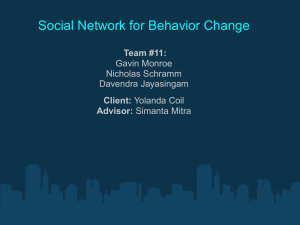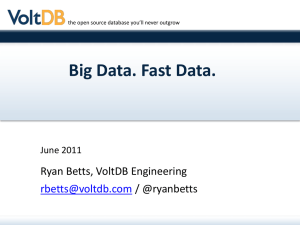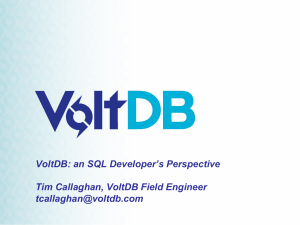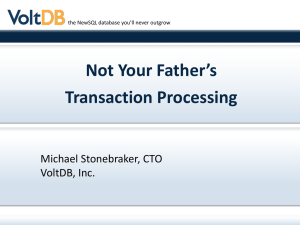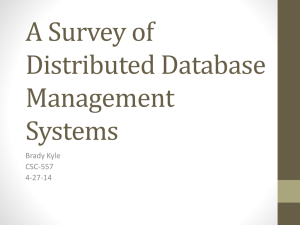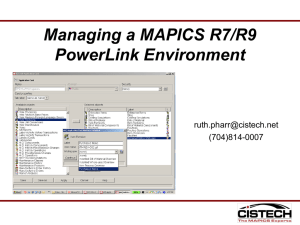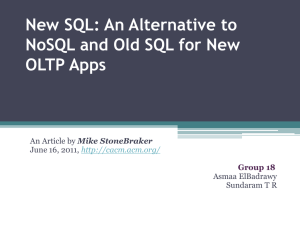Stonebraker
advertisement
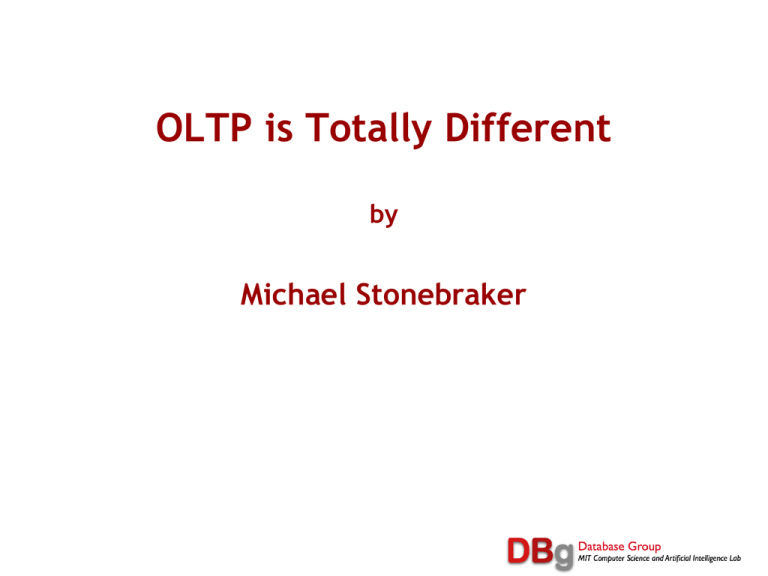
OLTP is Totally Different by Michael Stonebraker storage ACID Replication The Old Way The Old Way Disk The New Way The New Way Main memory Caching Anti-caching Record level locking MVCC, TS ordering, … Data logging Command logging Active-passive Active-active Products Old Way Oracle, New DB2, SQLServer, Postgres, MySQL … Way Hekaton, Hana, MemSQL, VoltDB, SQLFire,… Main Memory Storage 1 Tbyte costs (maybe) $25K and declining rapidly If your data doesn’t fit then wait a couple of years NVRAM will push this way out later this decade Anti-Caching (VLDB ‘14) Main memory format for data When memory fills, gather cold tuples and write to an archive (in main memory format) When a transaction has a “miss”, abort it but continue with “fake processing” to find all the absent data Get and “pin” the needed data Reschedule transaction when all needed data in main memory Numbers from H-Store implementation Some Data From Nirmesh Malvaiya Implemented Compared against the VoltDB scheme Asynchronous Command Aries in VoltDB checkpoints logging Some Data From Nirmesh Malvaiya 1.5 X run-time performance gain 1.5 X penalty at recovery time Almost Only all OLTP applications demand HA run recovery for cluster-wide failures E.g. power outage Concurrency Control MVCC popular (Hana, Hekaton) Time stamp order popular (H-Store/VoltDB) Lightweight combinations of time stamp order and dynamic locking (Calvin, Dora) I don’t know anybody who is doing normal dynamic locking 9 It’s too slow!!!! How to Implement HA Active-Passive As in the traditional wisdom Active-Active Send update transactions to all copies Each executes transaction logic Requires deterministic scheduling!!! Net-Net on OLTP Main memory DBMS With And anti-caching command logging Deterministic HA concurrency control via active-active Has nothing to do with the traditional wisdom!!!


